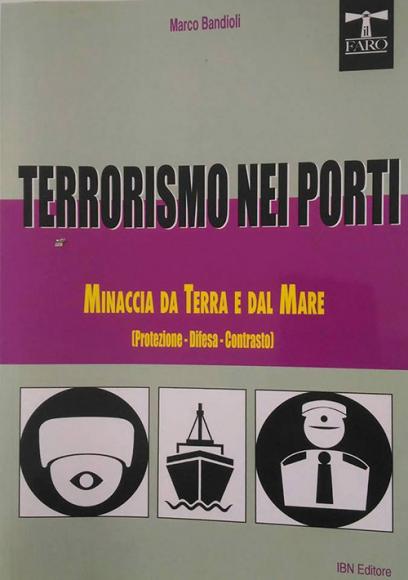Marco Bandioli
Ed. IBN
pp. 134
The author, Marco Sereno Bandioli, is an experienced Navy officer who has collected in this manual all those predispositions and operating procedures that can be of help for performing the surveillance, control, protection, defense and alarm functions and contrast in a critical infrastructure such as a port.
The manual is divided into four chapters:
In the first chapter the general and reference concepts are illustrated, for which we examine the meaning of terms such as "security", in the different meanings of the term (safety, security), but also the concepts of asymmetric warfare and maritime terrorism, giving the reader an historical indication of the evolution of matter. From a didactic point of view, the "maritime safety", civil and military, is addressed. The importance of knowledge of the situation (Maritime Situational Awareness) is highlighted, which determines the capacities of the different organizations to “possibly be able to intervene adequately in the specific contexts of competence, from the rescue to the safeguard of life at sea to the armed intervention against pirates , traffickers and terrorists ". The knowledge of the sitazione is necessary to be able to face the threat, but it is not enough! It is necessary to integrate the information in one's possession with the political, legal and military aspects. Bandioli then goes on to illustrate the port, an organic complex of structures and services, illustrating its main functions: protection and shelter, safe landing and mooring, parking, refueling and repairs, loading, unloading and storage of goods, loading and unloading of personnel. Essential knowledge for those working in the sector. Naturally, as this is a manual, it is good to provide useful information to those who work in the sector, obviously this information includes those relating to national and international legislation on the safety of critical infrastructures and sensitive sites, including the international code for ship and port facility security (ISPS code).
What is meant by the term "protection"? And with "defense"? The author illustrates the substantial difference between "protection" (criteria, methods and procedures adopted to guarantee the defense of an infrastructure in normal situations) and "defense" (criteria, methods and procedures that give rise to the defense plan and are adopted to guarantee the defense of infrastructures in emergency situations). These topics are the subject of further study in the second chapter, with which we get to the heart of the subject.
An important part of the chapter is dedicated to the operational defense functions and possible solutions, in this paragraph the author illustrates, based on his long experience, which solutions are used to perform the defense function, while the last part is dedicated to risk analysis related to a port infrastructure.
The third chapter is entirely dedicated to the safety protection system. After a brief doctrinal introduction, in which the activity of acquiring the objectives is also analyzed, we immediately pass to the practical part, clearly identifying what must be defended and how it can be defended. The components that contribute to the physical security of a port are therefore listed and analyzed: the perimeter and the perimeter lines (facing the ground and facing the sea), walls and fences, access and exit gates (on land and at sea), docks, piers, areas open to the sea, inland areas, compartmentalization of critical areas and the area from which command, coordination, control and contrast activities, or the "operations center", must be managed.
Finally, in the fourth chapter, detailed instructions are given on how the plant security document for a port must be drawn up. This document is a useful knowledge tool (to be kept up to date) for all the experts, which describes the entire security system and the procedures applied (normal and in emergency) to guarantee Control, Protection, Defense and the contrast to the threat, the document also collects information about the activities that take place within the infrastructure.
Ultimately, the manual that the vessel captain Bandioli offers us is a useful tool for all those who normally operate in a complex infrastructure such as a port area.
Useful and well written, it is an excellent aid, to keep always at hand.
Alessandro Rugolo












